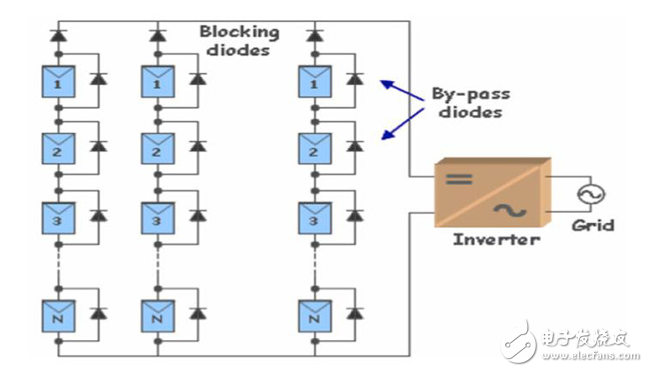
资料下载

最大化太阳能组件的输出
最大化太阳能组件的输出
监测是打开太阳能电池能量生产的关键。当太阳能环境在不断变化时,利用恒定的能量产生的电路结构,很容易降低效率。
作为太阳能模块升温或接收更多的光的电流-电压特性的变化可能是太阳能电池阵列效率损失的一个重要来源。如果产生并网兼容的逆变器不适应输出电压和电流条件,它将浪费更多的电。作为回应,电子公司已经生产出用于优化能量转换和旁路电子设备所需的最大功率点跟踪(MPPT)芯片,以防止临时非生产模块破坏活性电池的输出。
在晴朗的日子接近赤道时,来自太阳的能量意味着地球表面的一平方米能接收超过1千瓦的电力。今天的太阳能电池使这种能量的绝大部分转化为电能。在实验室条件下测试的硅基太阳能电池的转换效率接近25%。然而,这些电池还没有投入生产光伏(PV)面板,即使他们这样做,还有其他问题,降低了总光伏系统的效率。

The electronic controls behind the solar cells provide the key to leveraging the raw efficiency of the solar cell. The control systems need to be able to react to changing weather conditions to ensure that the PV cells and modules operate as close to their peak as possible. Each solar cell has a characteristic current-voltage (IV) curve that reflects its response to both temperature and incident-light levels.
The cells packed into a photovoltaic module might generate a high voltage but very-low current on a drab winter day. As light levels rise the voltage will drop slightly, but current will increase dramatically until it approaches its peak level. As the module heats up, the output voltage of the module will fall, reducing its overall energy output. As a result, even during periods of intense sunlight when they should be at peak efficiency, PV panels can suffer from significant drops in conversion efficiency if the electronic circuitry does not compensate for this.
声明:本文内容及配图由入驻作者撰写或者入驻合作网站授权转载。文章观点仅代表作者本人,不代表电子发烧友网立场。文章及其配图仅供工程师学习之用,如有内容侵权或者其他违规问题,请联系本站处理。 举报投诉
- 相关下载
- 相关文章






